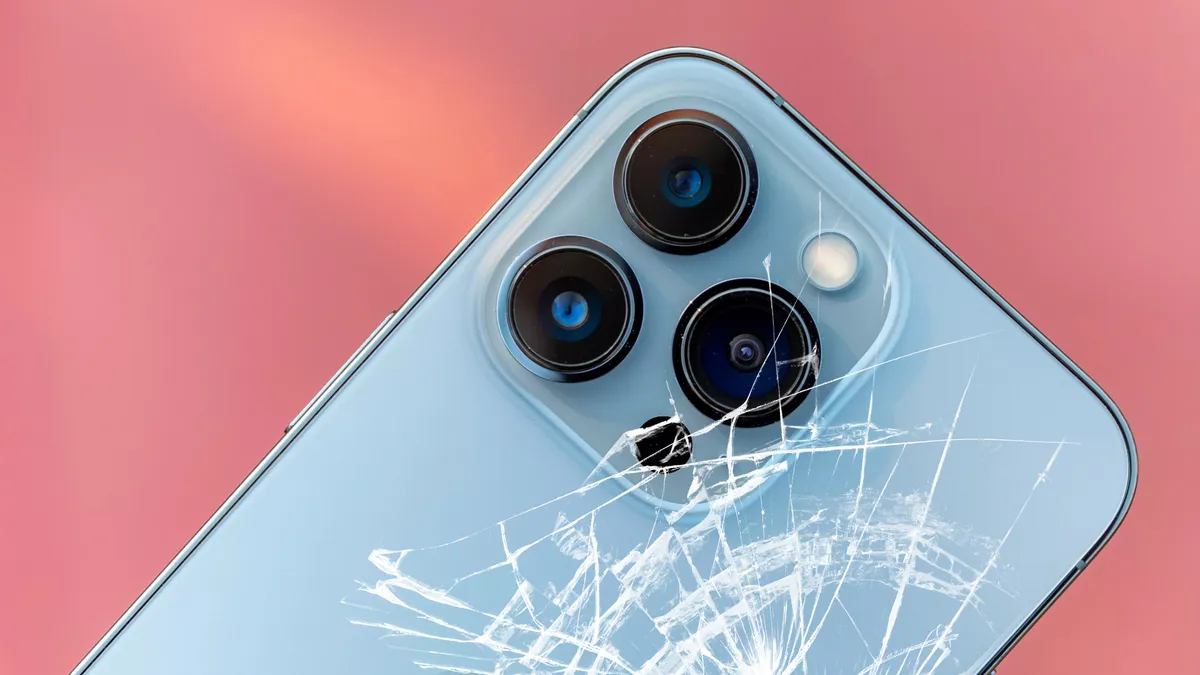Top Tips for DIY iPhone Repair
When your iPhone encounters a problem, it’s not always necessary to rush to a professional for repairs.
With the right tools and guidance, you can often fix common issues yourself.
This article aims to provide you with top tips for DIY iPhone repair. We’ll cover everything from replacing a cracked display to addressing water damage.

Remember, while DIY repairs can save money, they also require patience and precision. It’s crucial to understand your limits and when to seek professional help.
Whether you’re a tech enthusiast or just looking to save some cash, this guide will help you navigate the world of iPhone repair techniques.
Let’s dive in and explore how you can extend the life of your iPhone with some DIY know-how.
Understanding Your iPhone and Preparing for Repair
Before you start any repair, it’s crucial to diagnose the issue with your iPhone.
Understanding the problem will guide your repair process and help you gather the necessary tools.

Safety should be your top priority when preparing for a repair. Always power off your iPhone before starting.
Work on a static-free surface to prevent electrostatic discharge, which can damage your device’s components.
A clean, well-lit workspace can also make the repair process smoother.

When it comes to tools, you’ll need a few specific ones for iPhone repairs.
Here’s a basic list:
- Pentalobe screwdriver: for removing the iPhone’s pentalobe screws.
- Spudgers: for safely prying open your iPhone and disconnecting cables.
- Suction cups: for lifting the screen from the iPhone’s body.
Investing in high-quality tools can make your repair work easier and more efficient.
Remember, preparation is key to a successful DIY iPhone repair.
Step-by-Step Guide to Replacing a Cracked iPhone Display
A cracked display is one of the most common iPhone issues.
Luckily, it’s also one of the most straightforward to fix.

Before you start, make sure you have a new display ready for replacement.
It’s crucial to use genuine Apple parts to ensure compatibility and quality.
Non-genuine parts may cause further damage or void your warranty.
Now, let’s dive into the step-by-step process.
- Remove the two pentalobe screws at the bottom of your iPhone using a pentalobe screwdriver.
- Attach a suction cup to the bottom of the screen and gently pull up to create a small gap.
- Insert a spudger into the gap and slide it around the edges to disconnect the clips holding the screen.
- Open the iPhone like a book, but be careful not to tear the ribbon cables connecting the display.
During disassembly, keep your screws and parts organized.
A magnetic mat or containers can help keep track of these small components.
Remember, some screws are different sizes, so note where each one comes from.
Once the screen is open, you’ll see several ribbon cables.
Disconnect these cables using a spudger.
Now, you can remove the old display.
Attach the new display by connecting the ribbon cables.
Ensure they snap into place securely.
Close the iPhone and reinsert the pentalobe screws.
After reassembly, turn on your iPhone to check the new display.
If it’s working correctly, you’ve successfully replaced your cracked iPhone display!
Remember, patience and precision are key in this process.
Battery Replacement Techniques
Replacing an iPhone battery can breathe new life into your device.
However, it’s crucial to identify the correct battery type for your iPhone model.

Using the wrong battery can lead to serious issues.
Always opt for genuine Apple batteries to ensure safety and compatibility.
Now, let’s walk through the battery replacement process.
First, remove the pentalobe screws and open the iPhone as described in the display replacement section.
You’ll see the battery connected to the motherboard with a connector.

Use a spudger to gently disconnect this connector.
Next, remove the adhesive strips holding the battery in place.
If they break, you can use a bit of heat and a plastic card to pry the battery out.
Once the old battery is out, place the new one in the same spot.
Connect it to the motherboard, reassemble your iPhone, and power it on.
If done correctly, your iPhone should now have a fresh battery and improved battery life.
Addressing Water Damage
Water damage can be a serious issue for iPhones.
If your iPhone gets wet, the first step is to turn it off and remove the SIM card.

by Annie Spratt (https://unsplash.com/@anniespratt)
Avoid the urge to use a hairdryer or other heat source to dry it out.
This can cause more harm than good.
Instead, place it in a bag of uncooked rice or silica gel packets to absorb moisture.
Leave it there for at least 48 hours before turning it back on.
Long-term water damage can lead to corrosion and other issues.
If your iPhone doesn’t turn on after drying out, or if you notice other issues, it may need professional repair.
Remember, water damage is often not a quick fix and requires patience and potentially professional help.
Software Troubleshooting Before Hardware Repairs
Before diving into hardware repairs, it’s wise to rule out software issues.
Common software problems can mimic hardware faults, leading to unnecessary repairs.

For instance, a frozen screen might not mean a faulty display.
It could be a software glitch that a simple restart can fix.
Similarly, if your iPhone is not charging, check if the charging port is clean and the charger is working.
If these checks don’t resolve the issue, then it’s time to consider hardware repair.
Remember, always start with the simplest solutions before moving on to more complex iPhone repair techniques.
When to Seek Professional Help
DIY iPhone repair can be rewarding, but it’s not always the best route.
Some issues are beyond the scope of DIY fixes.
For instance, if your iPhone has severe water damage or needs a motherboard repair, it’s best to seek professional help.
Remember, attempting complex repairs can lead to further damage. Always weigh the risks before diving into DIY iPhone repair techniques.
Replacing Other Components: Cameras, Buttons, and More

Your iPhone is a complex device. It’s made up of many parts, each with a specific function.
Sometimes, these parts can fail.
When that happens, you might need to replace them.
Let’s start with common audio issues.

If your iPhone’s speaker or microphone isn’t working, it could be due to a hardware issue.
You’ll need to open your iPhone and replace the faulty component.
Remember to keep track of all screws and parts during disassembly.
Next, let’s talk about the camera.

If your iPhone’s camera isn’t working, it could be due to a hardware issue.
You’ll need to open your iPhone and replace the faulty camera.
Again, remember to keep track of all screws and parts during disassembly.
Finally, let’s discuss buttons.
If your iPhone’s buttons aren’t working, it could be due to a hardware issue.
You’ll need to open your iPhone and replace the faulty button.
Remember, patience and precision are key when performing these repairs.
Always test your iPhone after a repair to ensure full functionality.
And remember, if a repair seems too complex, it’s best to seek professional help.
Post-Repair: Testing and Maintenance

After a repair, it’s crucial to test your iPhone.
You want to ensure all functions work correctly.
Start by checking the repaired component.
If you replaced the screen, check its touch sensitivity.
If you replaced the speaker, test the audio quality.
Don’t forget to test other functions too.
Even if they weren’t part of the repair, they could be affected.
Now, let’s talk about maintenance.

Maintaining your iPhone can prevent future issues.
Keep your iPhone’s software up to date.
Regularly clean your iPhone, both inside and out.
And remember, a well-maintained iPhone can have a higher resale value.
So, take the time to care for your device.
It’s worth it in the long run.
Remember, the goal is to extend the life of your iPhone.
And with proper testing and maintenance, you can do just that.
Understanding and Handling iPhone Adhesives

Adhesives play a key role in iPhone assembly.
They secure components and ensure a tight seal.
There are different types of adhesives used.
Some are for securing screens, others for batteries.
Knowing how to handle these adhesives is crucial.
For removal, heat can be your friend.
A heat gun or hairdryer can loosen the adhesive.
But be careful not to overheat your device.
When applying new adhesive, precision is key.
Ensure a clean and precise application for a secure fit.
Remember, proper handling of adhesives can make or break your repair.
The Environmental and Economic Benefits of DIY iPhone Repair
DIY iPhone repair can save you money.
Professional services can be costly.
Doing it yourself can cut these costs significantly.
But the benefits aren’t just financial.
Repairing instead of replacing reduces electronic waste.
This is a major environmental concern.
By repairing, you’re doing your part to help.
So, DIY iPhone repair is both wallet-friendly and eco-friendly.
Conclusion: Embracing the DIY Spirit
We’ve covered a lot of ground in this guide.
From diagnosing issues to replacing components, we’ve explored various iPhone repair techniques.
Remember, the key to successful DIY repair is patience and continuous learning.
Embrace the DIY spirit, keep honing your skills, and you’ll become your own iPhone repair expert in no time.



